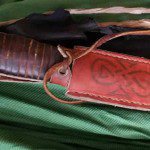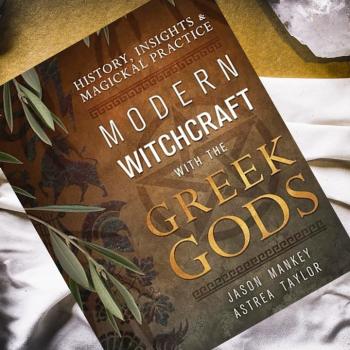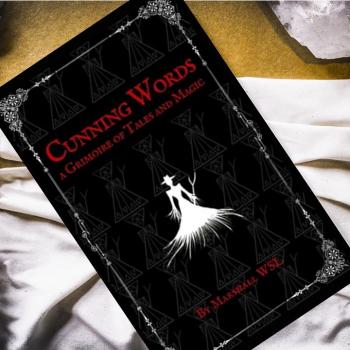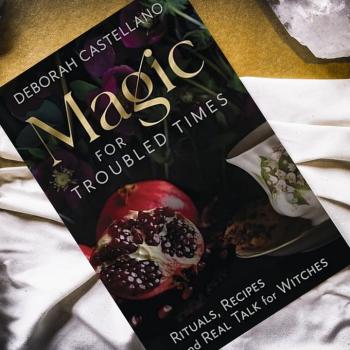Greetings, and welcome back to Wyrd Words. Keeping the Thor in Thursdays, every other week here on Agora!
A while back I wrote a piece about the many possible destinations found within the Heathen concept of the afterlife. Many aspects if our tradition end up getting oversimplified into easy-to-swallow, “Christianized” binaries. This is most evident in the modern concept of Valhalla. I so often see Valhalla, or in Old Norse: Valhöll, described as this kind of glorious “Heathen Heaven”; a golden hall in Asgard where every day is filled with Fighting and Feasting and Fff….‘Frolicking’… The idea of Valhöll goes so much deeper than that, and it’s such a shame to see this fundamental part of our tradition’s worldview so often be either misunderstood or blatantly misrepresented.

The single most informative description of Valhöll that we have in the Lore is found in Grímnismál. There we see the words that so often shape our modern image of this realm. Odin, disguised as Grímnir, tells us that Valhöll rests peacefully in the golden field of Glaðsheim; thatched with shields, and raftered by spears, where mail coats lay draped over the benches. A wolf hangs near the western entrance, and an eagle soars above. The river Thund flows nearby – deep, strong, and difficult to cross. The Grímnismál, despite its thoroughness, never mentions fighting or battle. In fact, while the first stanza to mention this place is often translated Valhalla arises or Valhalla towers, the verb used to describe Valhöll in that first stanza (þrumir), actually meant ‘to lay still’. Valhöll, as described in Grímnismál, is a quiet place.
The idea of the eternal battle only comes up in Vafþrúðnismál, during a contest of wits between Odin and a Jötunn (giant/troll). There, Vafþrúðnir says that Odin’s champions go forth from Valhöll each day to fight, and then return in the evening to sit together and feast. Interestingly, we have two existing manuscripts with this poem and BOTH have copy errors on the two stanzas that describe this fighting. (Marked by the break in poetic metre and the gaps in the text). So we can see the modern image of Valhöll as an eternal battleground begins to fall apart when we examine the Lore. That being said, it would be inaccurate to claim that Valhöll has no connections with eternal combat; it’s just not in the way that most people seem to think it does.
Direct descriptions of Valhöll may be sparse, but by taking in the contextual evidence from the Sagas as well as the archaeological record, we can piece together a more complete understanding of this incredibly important element of our traditions. Understanding Valhöll as it was originally conceived requires us to step away from a lot of the unconscious biases of our modern westernized culture. Death meant something very different to the old Norse and Germanic tribes than it does for most of us today. For one thing, the Norse had no concept of a soul. They didn’t even have a word for it until after the conversion to Christianity. The idea of a ghost or some manner of spirit moving on from this world and into the next didn’t really exist there. The closest thing they would have had to this concept was the fylgja. Instead, the dead were thought to remain in their bodies. I touched on this briefly in the previous article, with the dead often being thought to inhabit their own halls beneath the earth in much the same way they had in life. In several Sagas we see protagonists bravely entering the halls of the fallen, whether to claim the treasures therein or to eliminate the threat of a draugr (an undead corpse). The question of whether the dead were a positive or negative force varied widely depending on time, place, and the individual in question. One element remained mostly unchanged though. The dead carry on, for good or ill, beneath the earth.
In Saxo’s Gesta Danorum, the hero Hadingus is pulled under the earth by a strange cunning-woman. There he sees several parts of the underworld, including a battlefield where his mysterious guide informs him that those who fall in battle relive their deaths for eternity. In the story of Gorm and Thorkel, also recorded by Saxo, we see the main characters enter a dark and horrific tomb. There, two parties of dead men sit in tense silence, unable to harm one another in battle until one of the living comes down to join the fight. Interestingly, the tomb is said to have a roof of spears; an obvious allusion to the rafters of Valhöll in reference to an eternal battle among the dead within the tomb.
What really brings this all together is a passage in the poem Helgakviða Hundingsbana. The poem describes how the deceased Helgi is accepted into Valhöll, and then leads a host of men from Odin’s hall back out into the world for a battle. How does he accomplish this? The host comes and goes through Helgi’s burial mound. The barrow, the hall of the dead beneath the hill, leads to Valhöll! The grave itself acts as a doorway to the underworld.
This idea is seldom discussed in the Eddas or the Sagas, but there are other written accounts and archaeological finds which help explain what this idea meant before the conversion. Ahmad ibn Fadlān, famous for recording the classic Viking ship burial, wrote of a ritual in which a thrall that was to be burned with the dead chieftain was lifted over a mock door-frame three times. Each time she passes over it, she sees more of those who have died before her and describes the realm of the dead. The liminal space of the doorway itself was thought to have some connection to the afterlife. Some of these traditions even survived the conversion, lasting up until the modern age. One example of this is the Liklúker, or ‘cadaver-door’. This was a hole cut in the wall of a home, through which a dead body would be passed on its way to the grave. The purpose of this was to trick the dead, so they could not find their way back through the main door of the house. Not only do some of these doors still exist in very old houses, this practice was described in at least two of the sagas – Eyrbyggja saga and Egils saga SkallaGrímssonar.

Back in the Grímnismál, Odin makes a special point of counting the many hundreds of doors within Valhöll. (540 to be exact) At first glance this would simply seem to be a brag about the immensity of Odin’s hall. However, taken in the light of what we’ve learned from the rest of the Lore as well as the archaeological record, this claim takes on a whole new meaning. The door-frame that gave a glimpse into the underworld, the battle in the tomb, Helgi’s passage to and from Valhöll through his barrow mound; the 540 doors of Valhöll lead to GRAVES. The Einherjar train in their tombs, traveling through the doorways of the dead to rest and replenish in the relative peace of Valhöll.
Valhöll isn’t the rowdy battlefield where partying warriors spend eternity killing each other. It’s the communal hall where tired soldiers can take their rest between battles. It’s not any kind of glorious “Heathen Heaven”, it’s simply one location in a much wider underworld that exists among the barrows of the dead. Valhöll is less like paradise and more like the agreed upon rally location of a Jarl who needs to be able to call his forces to him at a moment’s notice. Think of it like a village, with Odin’s abode as the Mead Hall, where the barrows of the fallen are like the surrounding homesteads, and Hel is the surrounding countryside.
Pronunciation guide
- Valhöll: (Wal/hawl)
- All of the consonants here are standard for English. The a is pronounced as one would in the word ‘father’. ö in Old Norse made an AW sound similar to the ‘au’ in ‘caught’ made with rounded lips as if one was going to say ‘O’.
- Grímnismál: (Greem/nis/mahl)
- Here the á is an AW sound similar to the ‘au’ in ‘caught’, but it is held longer than the ö sound.
- Vafþrúðnismál: (Waf/Throo/th-nis/mahl)
- Both þ and ð make an English TH sound. ð sounds like this and father. þ sounds like thrill or thistle. If you can’t tell those apart, don’t worry too much. They’re very similar sounds to most English speakers.
- Jötunn: (Yaw/tun)
- In Old Norse the J at the beginning of the word makes an English Y sound, while the ö again makes a rounded ‘au’ sound.
- Fylgja: (Feel/gya)
- The first y is pronounced like the ‘ee’ in seen, while the ya is a rounded sound, much like the informal you (or ‘ya’ sound) in phrases like ‘gotcha’.
- Draugr: (Dr-ou/ger)
- The ‘ou’ as above is an OW sound, while the gr is pronounced much like one would read the written onomatopoeia for growling. ‘grrrr…’
Further Reading:
If you want to learn more about the ideas discussed here check out these documents. (Both titles lead to a PDF)
- Doors to the dead. The power of doorways and thresholds in Viking Age Scandinavia
Marianne Hem Eriksen - The Road to Hel
Hilda Roderick Ellis M.A., Ph.D.

Patheos Pagan on Facebook.
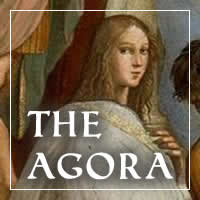
the Agora on Facebook
Wyrd Words is published on alternate Thursdays. Subscribe via RSS or e-mail!
Please use the links to the right to keep on top of activities here on the Agora as well as across the entire Patheos Pagan.



